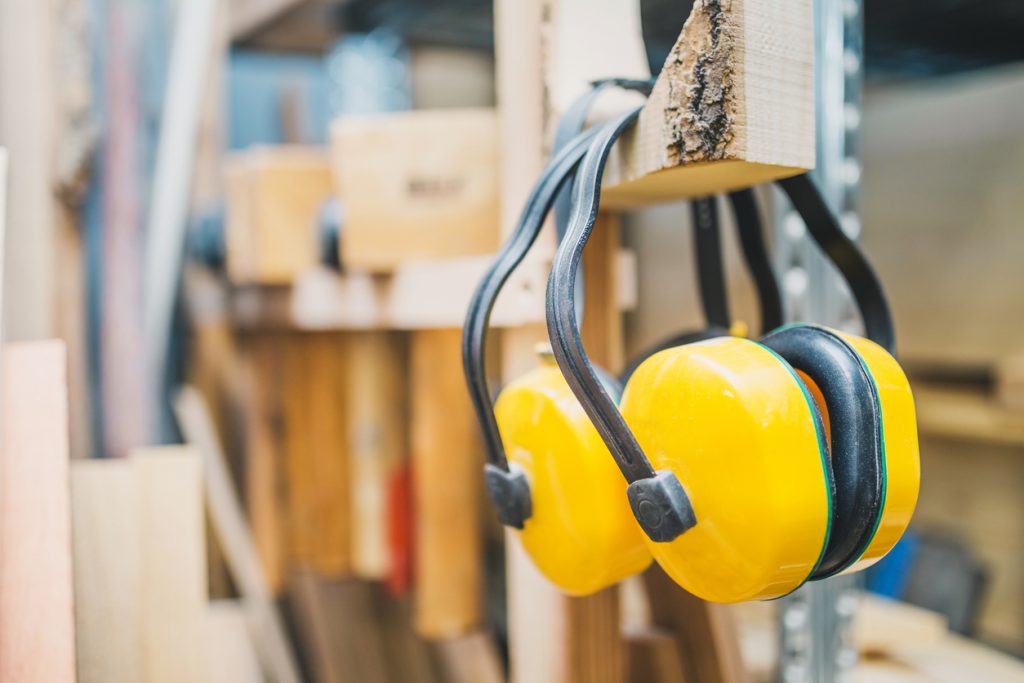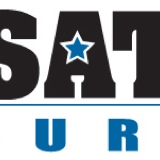Title Page
-
Conducted on
-
Prepared by
Safety Inspection Checklist
Administrative:
-
1) Written safety rules / safe job procedures in place
-
2) OSHA log updated / safety posters displayed
-
3) Management Safety Policy in place
-
4) All planned safety activities performed (meetings, inspections, training)
-
5) Effective new employee safety orientation
-
6) Are TN Department of Labor Wage and Hour and OSH Notice posters posted?
-
7) HAZCOM binder up to date?
-
8) Hearing Communication Binder Up to date?
-
9) Bloodborne Pathogen Binder up to date?
-
10) Lock out Tag out Binder up to date?
-
Respiratory Binder up to date?
-
Forklift/Crane Binders up to date?
Life Safety Issues / housekeeping:
-
1) Walkways maintained, aisles defined, uncluttered
-
2) Emergency exits clearly identified, adequate number
-
3) Egress routes marked and accessible
-
4) Unapproved doors clearly marked as "NOT AN EXIT"
-
5) Stairs / aisleways free from material storage and debris
Emergency Medical:
-
1) Emergency contact information posted
-
2) First aid responders available on each shift
-
3) Bloodborne pathogens exposure potential adequately addressed
-
4) First aid supplies adequate and available
-
5) Transportation available for injured workers / plan in place
-
6) Are AED's marked and inspected monthly and marked on inspection tag?
Slip / Trip / Fall Hazards:
-
1) Portable ladders equipped with non-slip feet. Metal ladders marked as "DO NOT USE AROUND ELECTRICAL EQUIPMENT".
-
2) Stairways in good repair with handrails, treads, and risers in proper proportion and non-slip.
-
3) Elevated areas have guardrails and toe boards
-
4) Work areas, aisleways, storage areas are orderly
-
5) Illumination adequate for normal conditions, emergency lighting in place.
-
6) External walking, parking, break areas free from hazards, well maintained.
-
7) Warning signs posted for wet floors or spills
-
8) Anti slip mats and flooring used where appropriate
-
9) Are spill kits available?
Hand Tools:
-
1) Power tools properly grounded / have safety power switches
-
2) Defective tools are removed from service
-
3) Proper guards are provided, tools electrically grounded or double insulated
-
4) There is a preventative maintenance / inspection program
-
5) Employees are trained in the safe use of hand tools
-
6) Are all electric cords properly protected from frays or cut damage?
Fire Safety:
-
1) Portable fire extinguishers of proper type are mounted properly, accessible, and inspected.
-
2) Approved safety containers are used for flammable liquids
-
3) Bonding and grounding used with the storage of flammable materials.
-
4) Combustible debris disposed of regularly
-
5) Sprinkler system functional / inspected / documented
-
6) Smoke / heat detectors functional and inspected
-
7) Minimum 18" clearance below sprinkler heads
-
8) Sprinkler valves locked open
-
Annual Fire drill last done?
Electrical Hazards:
-
1) Machinery and equipment are grounded
-
2) 36" clearance is maintained in front of all electrical panels
-
3) Electrical panels clearly marked
-
4) Outlets, switches, and boxes have covers
-
5) Permanent wiring in place, no extension cords
-
6) Exposure of overhead electrical lines controlled
-
7) Emergency stops and critical electrical controls are identified
-
8) Appropriate electrical systems designed for hazardous locations have been installed in spray booths and flammable liquid storage rooms
Mobile Equipment: Forklift/Crane/Tractor Safety
-
1) Observed operating at a safe speed
-
2) Observed safe loading and unloading practices
-
3) Equipped with back-up alarms
-
4) Operators certified / trained
-
5) Equipment inspected daily
-
6) Seat belt worn by operators
-
7) Are personnel observed to be using the horn when entering/exiting the building and going around corners?
-
8) Are personnel observed wearing hardhats when operating crane(s)?
Mechanical and Manual Material Handling and Storage:
-
1) Hoist chains, cables, and slings are inspected regularly and documented
-
2) Storage piles are stable and secured from falling or collapse
-
3) Load limits are posted on all floors above ground level
-
4) Load limits are displayed on all hoists
-
5) Manual handling aids are available and used
-
6) Weight limits set for manual lifting, carrying, pushing, and pulling
-
7) Workers trained in proper lifting techniques / ergonomics
Machinery:
-
1) Lockout / tagout program in place, locks available, and employees trained.
-
2) Hazardous areas painted bright colors
-
3) Guards are provided for "point-of-operation" of machinery
-
4) Clothing and hair restrictions in place to prevent entanglement in machinery
-
5) Power transmission guards in place
-
6) Noise exposure adequately addressed
-
7) Warning displayed in obvious locations
-
8) Compressed air systems have pressure reduced to 30 PSI and are not used to clean clothing.
-
9) Air hoses provided with safety latch to prevent accidental disconnect
-
10) Welding equipment in good condition
-
11) Compressed gas cylinders are secured to prevent falling
-
12) Overhead hazards from equipment, conveyors, and process pipes area guarded below 7' from floor
Chemicals:
-
1) Hazardous material containers labeled
-
2) MSDS/SDS sheets available
-
3) Hazardous Communication Training program in place
-
4) Smoking, drinking, and eating prohibited in work areas where chemicals are used.
-
5) Eyewash / Emergency showers available and functional
-
6) Is each original container for a hazardous substance labeled with product identifier, signal word, hazard statement, and name, address, and phone number of the chemical manufacturer, importer or other responsible party?
-
7) Find 2 random chemicals and do an audit on. Check to see if SDS is in SDS book/on Ipads.
-
8) If chemical(s) found is/are NOT in original container, is secondary container properly labeled?
Personal Protective Equipment (PPE):
-
1) PPE assessment performed - PPE requirements in place
-
2) Employees trained in the use and maintenance of PPE - training documented
-
3) Hard hat areas designated and enforced
-
4) Hearing protection utilized in required areas
-
5) Face / eye protection in place where needed
-
6) Safety foot protection required where appropriate
-
7) Protective clothing, gloves, aprons, boots, face shields, and goggles are used when handling hazardous material
-
8) Approved respiratory protective equipment available and fit tested
-
9) Personnel that are in Respiratory Protection Program are seen first hand that they are using appropriate respirators/facemasks WHEN required to wear one.
Random Employee Education Screening: For this section ask 5 random employees (all from different departments) and ask the following questions and document their responses.
-
Employee Name #1
-
Q1: Where is the SDS book located?
-
Q2: What chemicals are you exposed to on the daily?
-
Q3: Do you know where your nearest Fire Extinguisher is?
-
Q4: Do you know where the nearest AED is?
- By main exit door going into the main lobby.
- In the warehouse.
- Don't know.
-
Q5 Do you know who is CPR/First Aid Certified in the factory?
Random Employee Education Screening: For this section ask 5 random employees (all from different departments) and ask the following questions and document their responses.
-
Employee Name #2
-
Q1: Where is the SDS book located?
-
Q2: What chemicals are you exposed to on the daily?
-
Q3: Do you know where your nearest Fire Extinguisher is?
-
Q4: Do you know where the nearest AED is?
- By main exit door going into the main lobby.
- In the warehouse.
- Don't know.
-
Q5 Do you know who is CPR/First Aid Certified in the factory?
Random Employee Education Screening: For this section ask 5 random employees (all from different departments) and ask the following questions and document their responses.
-
Employee Name #3
-
Q1: Where is the SDS book located?
-
Q2: What chemicals are you exposed to on the daily?
-
Q3: Do you know where your nearest Fire Extinguisher is?
-
Q4: Do you know where the nearest AED is?
- By main exit door going into the main lobby.
- In the warehouse.
- Don't know.
-
Q5 Do you know who is CPR/First Aid Certified in the factory?
Random Employee Education Screening: For this section ask 5 random employees (all from different departments) and ask the following questions and document their responses.
-
Employee Name #4
-
Q1: Where is the SDS book located?
-
Q2: What chemicals are you exposed to on the daily?
-
Q3: Do you know where your nearest Fire Extinguisher is?
-
Q4: Do you know where the nearest AED is?
- By main exit door going into the main lobby.
- In the warehouse.
- Don't know.
-
Q5 Do you know who is CPR/First Aid Certified in the factory?
Random Employee Education Screening: For this section ask 5 random employees (all from different departments) and ask the following questions and document their responses.
-
Employee Name #5
-
Q1: Where is the SDS book located?
-
Q2: What chemicals are you exposed to on the daily?
-
Q3: Do you know where your nearest Fire Extinguisher is?
-
Q4: Do you know where the nearest AED is?
- By main exit door going into the main lobby.
- In the warehouse.
- Don't know.
-
Q5 Do you know who is CPR/First Aid Certified in the factory?













